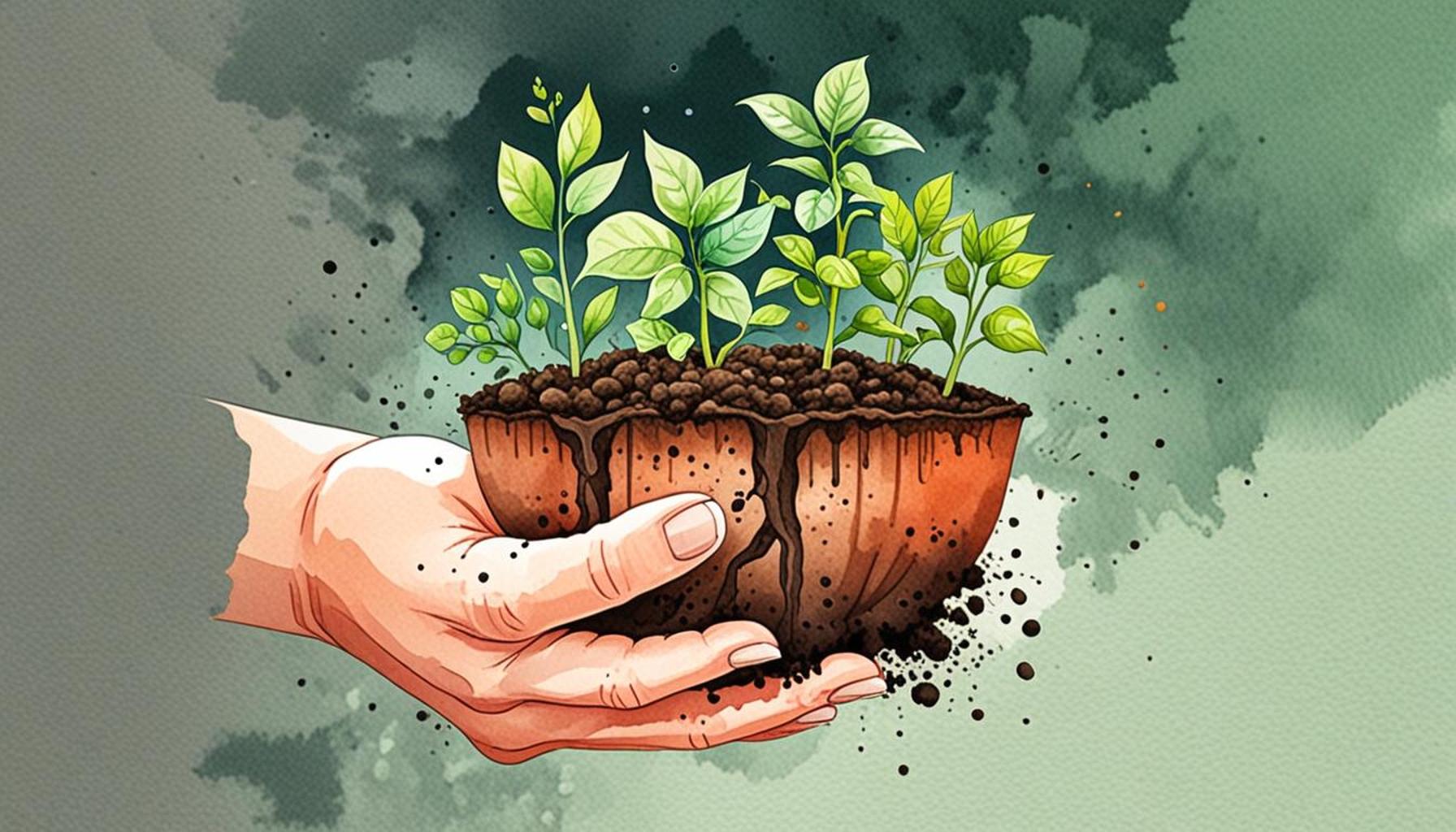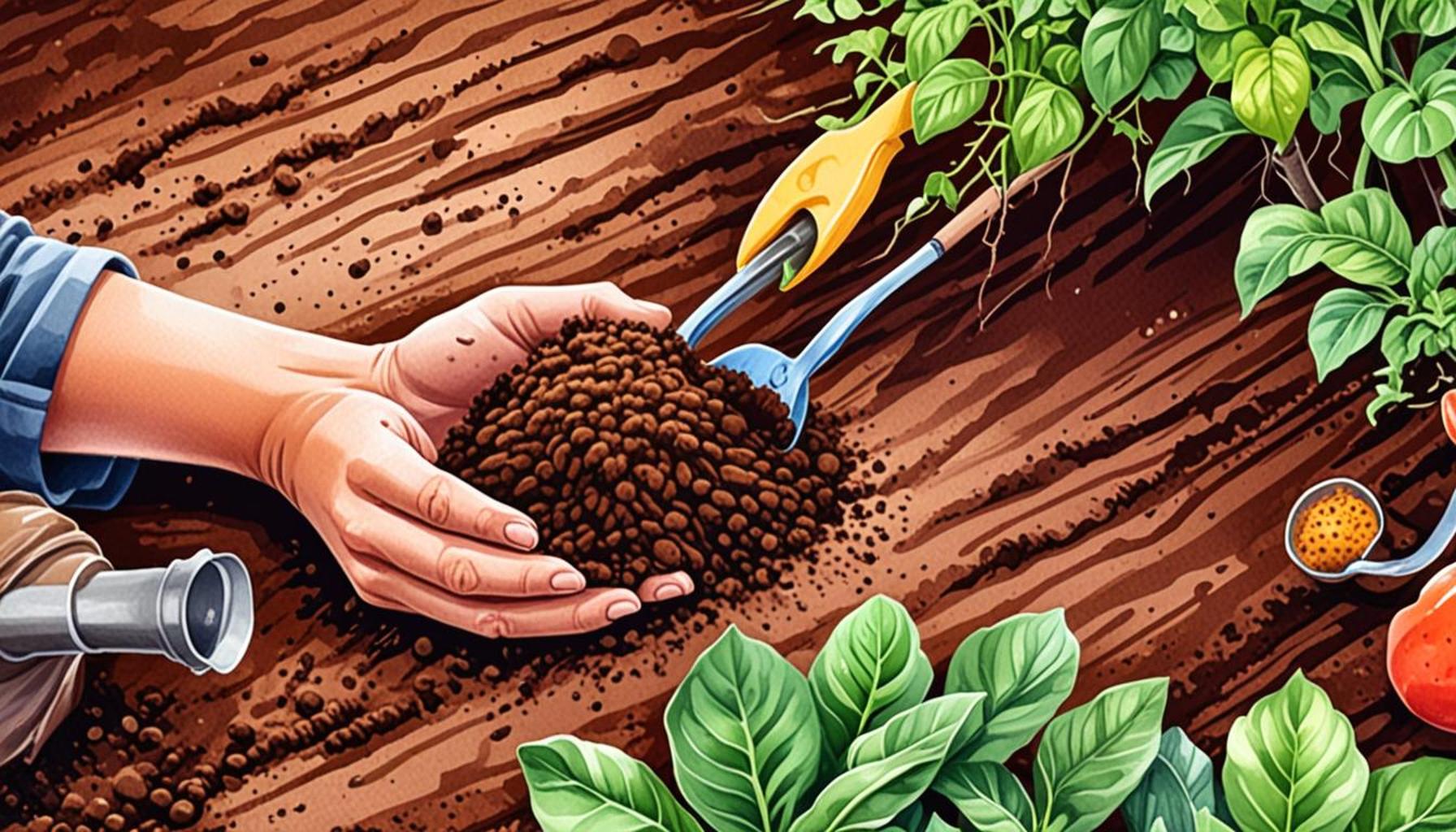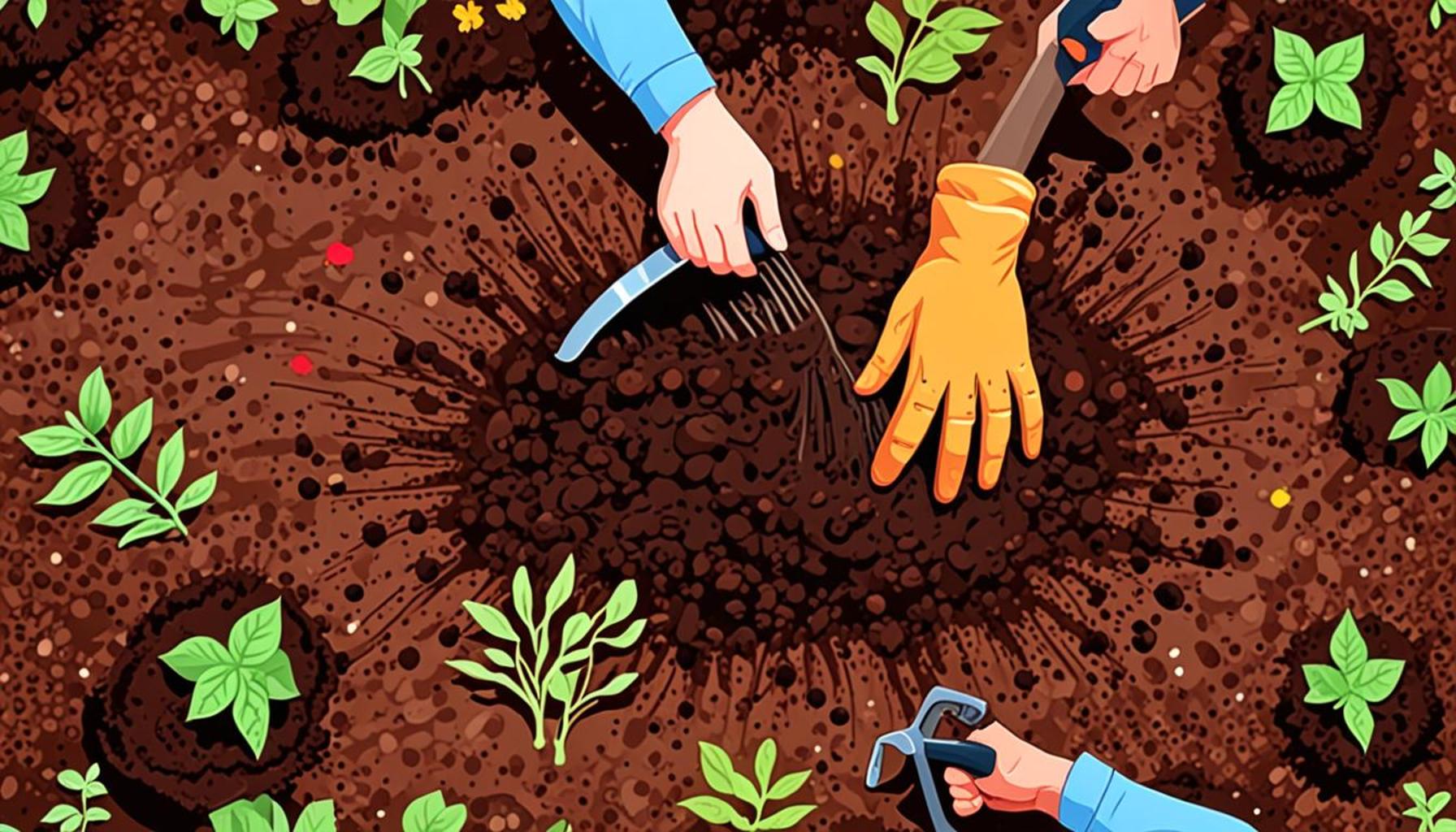The Influence of Soil pH on Plant Growth: A Beginner’s Guide

Understanding Soil pH and Its Role in Plant Health
The pH level of soil is a fundamental aspect of horticulture and agriculture that cannot be overlooked. It serves as a vital indicator that affects every facet of plant health, ranging from growth to disease resistance. The pH scale, which runs from 0 (very acidic) to 14 (very alkaline), provides a framework for understanding how soil conditions can impact plants and their ability to thrive. When gardeners and farmers gain insight into soil pH, they equip themselves with the tools needed to foster a vibrant ecosystem in their gardens or crops, making this knowledge invaluable for anyone seeking greener pastures.
Why Soil pH Matters
Soil pH significantly influences several crucial factors that contribute to plant growth. Here are the key reasons why monitoring and managing soil pH should be a priority:
- Nutrient Solubility: Different nutrients become available or inaccessible at varying pH levels. For example, the essential nutrient nitrogen becomes less available in highly acidic soils, while phosphorus can be locked away in alkaline conditions. This means that a pH level typically between 6.0 and 7.0 is ideal for most crops, allowing for optimal nutrient absorption.
- Bacterial Activity: Soil organisms, including beneficial bacteria, flourish in specific pH ranges. Healthy bacterial populations play a pivotal role in decomposing organic matter, aiding in the nutrient cycle and promoting soil health. A pH that is too extreme can suppress these microorganisms, leading to imbalanced soil ecosystems.
- Water Retention: The pH level also affects soil structure. Acidic or alkaline soils can alter the soil’s capacity to retain moisture, significantly impacting plant health during dry spells. Maintaining a balanced pH can enhance the physical properties of soil, retaining moisture and promoting effective drainage.
When soil pH strays too far from the ideal range, plants often exhibit clear signs of distress. Gardeners may notice:
- Poor growth or yellowing leaves, often referred to as chlorosis, can indicate nutrient deficiencies.
- Weak root systems that fail to anchor the plant properly, reducing resilience against environmental stressors.
- Increased susceptibility to diseases, as stressed plants are often less equipped to fend off pathogens.
Understanding soil pH is not just about numbers; it’s about nurturing a thriving environment for plants. For instance, in regions such as the Midwest, where many farmers rely on crops like corn and soybeans, soil tests for pH can inform decisions on fertilization and crop rotation strategies to enhance yields. Practical tips for managing soil pH include incorporating organic matter such as compost, applying sulfur to lower pH, or using lime to raise it. These practices illustrate how an informed approach to soil management can lead to bountiful harvests.
The journey into soil pH is a stepping stone to grasping the profound interconnectedness between soil health and plant vitality. As you venture deeper into this essential topic, you will discover not only the science behind pH levels but also practical strategies for creating a thriving garden or farm. Your green thumb will flourish with knowledge, enabling you to cultivate plants that not only survive but thrive, empowering you to create a colorful, productive landscape.
DISCOVER MORE: Click here for effective pest capture techniques
The Science Behind Soil pH: A Deeper Look
To truly appreciate the influence of soil pH on plant growth, it is essential to understand not only what pH is but also how it interacts with various soil components. At its core, pH is a measure of the hydrogen ion concentration in the soil, which subsequently determines how acidic or alkaline the soil is. This seemingly simple number can dictate much about the soil’s overall health, including its structure, microflora, and nutrient availability.
The Impact of Soil pH on Nutrients
Soil pH directly affects how nutrients are absorbed by plants. For instance, iron—a critical micronutrient—becomes less available in alkaline conditions (pH higher than 7), which can lead to iron chlorosis, characterized by yellowing leaves. In contrast, certain nutrients like manganese and aluminum can become overly soluble and toxic in acidic soils (pH below 6). This showcases how crucial it is for gardeners and farmers to maintain a balanced soil pH. Here are some common nutrients and their availability at various pH levels:
- Phosphorus: Available between pH 6.0 and 7.5 but can become immobile in either very acidic or highly alkaline conditions.
- Calcium: Ideally available when pH is above 6; however, it can become locked in at low pH levels.
- Potassium: Generally stable across a wider pH range, but absorption can decline in highly acidic or alkaline soils.
- Magnesium: Best absorbed at a pH level of 5.5 to 7.0; both extremes can cause deficiencies or toxicities.
Moreover, the microbial community in the soil is profoundly influenced by pH levels. Beneficial microbes, such as nitrogen-fixing bacteria, thrive in pH ranges that favor nutrient cycling. When the soil is too acidic, its biological activity can diminish; reducing the effectiveness of these organisms means less organic matter is broken down and recycled into forms that plants can utilize. This interconnectedness is vital for a flourishing garden or crop yield.
Understanding pH Testing and Improvement
For budding horticulturists, the journey begins with testing soil pH. Many agricultural extensions offer testing kits or services that can measure the pH of your garden soil. A pH meter or simple test strips can also efficiently yield results. After determining the current pH, amendments can be made. If soil is too acidic, adding lime (calcium carbonate) can gradually raise the pH. Conversely, if it’s too alkaline, materials like sulfur and peat moss can help lower pH levels over time.
Knowing how to manage soil pH gives you the power to influence plant growth favorably. A small change in pH can lead to significant improvements in plant health, making it an invaluable piece of knowledge for any gardener or farmer. As you embark on your agricultural journey, remember that understanding soil pH is not just science; it’s the very foundation for nurturing successful plants in any garden setting.
The Importance of Soil pH in Plant Growth
Understanding the pH level of soil is crucial for any aspiring gardener or horticulturist. Soil pH affects the availability of essential nutrients that plants need for optimal growth. A pH level ranging from 6.0 to 7.0 is generally considered ideal, as it allows for maximum nutrient uptake. When the pH strays from this range, it can lead to nutrient deficiencies or toxicities. For example, acidic soils (pH below 6.0) may result in higher levels of aluminum, which can harm root development, while alkaline soils (pH above 7.0) can create deficiencies in key nutrients like iron and manganese.Another critical factor influenced by soil pH is microbial activity. Microorganisms play a pivotal role in decomposing organic matter, aiding nutrient cycling, and enhancing soil structure. The right pH level fosters a healthy microbial population, which can contribute to better soil aeration and water retention, promoting robust plant growth. Furthermore, specific plants thrive in unique pH conditions; for instance, blueberries prefer acidic soils, while many vegetables thrive in neutral or slightly acidic conditions. Monitoring and adjusting soil pH not only enhances plant health but can also mitigate issues such as pests and diseases. With proper pH management, gardeners can create a more resilient ecosystem, ensuring that their plants reach their full potential. To further explore the topic, refer to our informative table below that highlights the advantages and characteristics associated with different soil pH conditions and their impact on plant growth.
| Soil pH Category | Implications for Plant Growth |
|---|---|
| Acidic Soil (pH < 6.0) | Nutrient Availability: Limits uptake of calcium and magnesium; may increase aluminum toxicity. |
| Neutral Soil (pH 6.0 – 7.0) | Optimal Growth: Encourages maximum nutrient availability and balanced microbial activity. |
| Alkaline Soil (pH > 7.0) | Nutrient Deficiencies: Iron and phosphorus become less available; may hinder overall plant growth. |
In conclusion, soil pH is a critical parameter that affects almost every aspect of plant health and growth. For beginners, understanding the delicate balance of soil pH levels can lead to more fruitful gardening experiences. With the right knowledge of soil chemistry, anyone can cultivate thriving plants in their garden. Discovering how to adjust and manage soil pH effectively can unlock new levels of productivity and enjoyment in any gardening endeavor.
DIVE DEEPER: Click here to learn more about pest prevention
The Role of Soil pH in Plant Health and Disease Resistance
While soil pH has far-reaching impacts on nutrient availability and microbial activity, it also plays a significant role in plant health and disease resistance. Plants exist in a delicate balance where certain pH levels can promote robust growth while simultaneously warding off pests and pathogens. Understanding this relationship is crucial for any beginner gardener aiming for healthy, thriving plants.
Soil pH and Plant Health
Different plants have adapted to thrive in specific pH ranges, and failing to acknowledge these preferences can lead to suboptimal growth or even plant failure. For example, garden crops such as tomatoes and peppers perform well in slightly acidic soils, around pH 6.0 to 6.8. Conversely, blueberries prefer an acidic environment, ideally between pH 4.5 and 5.5. This nuanced understanding of plant preferences highlights the need for gardeners to consider soil pH when selecting crops.
Beyond preferred pH levels, soil acidity and alkalinity can influence a plant’s resilience against diseases. For instance, certain fungi and bacteria thrive in specific pH environments. In overly acidic soil, fungal diseases such as root rot become more prominent, while alkaline conditions can foster pathogens linked to bacterial wilt. By adjusting soil pH to align with specific plant needs, gardeners can create unfavorable conditions for these detrimental organisms. This simple practice of managing pH can be instrumental in reducing the need for chemical fungicides and pesticides.
Soil pH and Crop Yield
The relationship between soil pH and crop yield is another compelling reason to monitor and manage pH levels. Studies have shown that crops grown in optimal pH conditions can yield significantly more produce compared to those grown in untested or poorly managed soils. For instance, corn thrives best in a pH range of 6.0 to 7.5; at pH levels below 5.8, the potential yield can drop substantially due to nutrient deficiencies. Addressing pH levels preemptively can prevent stagnation in growth and help ensure a bountiful harvest.
A practical recommendation for those interested in sustainable gardening is implementing crop rotation in conjunction with pH management. Different plants exhibit varying pH needs and can help maintain a healthy balance in the soil. Alternating high-demand nutrients or acidity-requiring plants with those that prefer less acidity not only preserves the yields but also nurtures the soil ecosystem.
The Environmental Impact of Soil pH
Gardening is not just an individual endeavor; it interacts with broader ecosystem health. Soil pH can affect water quality in the surrounding environment as well. Acidic soils can lead to leaching of harmful metals, such as aluminum, into nearby water sources, posing risks to both aquatic life and human populations. Conversely, highly alkaline soils may impede the useful nutrients from being absorbed by both flora and fauna. Consequently, understanding and adjusting soil pH can yield benefits not only for your plants but also for the greater ecosystem.
Investing time in understanding the impact of soil pH on plant health, yield, and environmental implications propels gardening from a mere hobby to a science-based pursuit. As you continue to explore this fascinating world, remain mindful of how this invisible factor can pivotally shape your gardening experience.
DISCOVER MORE: Click here for effective watering techniques
Conclusion: Mastering Soil pH for Successful Gardening
Understanding the influence of soil pH on plant growth is an essential skill for any aspiring gardener. By familiarizing yourself with how pH levels impact nutrient availability, microbial activity, plant health, and even crop yields, you set the groundwork for a flourishing garden. The delicate balance of soil pH can not only enhance your plants’ resilience against diseases but also optimize their overall growth potential.
As highlighted, specific crops thrive within particular pH ranges. From the likes of tomatoes requiring slightly acidic conditions to the more finicky blueberries desiring much lower pH values, catering to these needs can significantly improve your harvest. Moreover, managing soil pH effectively can mitigate disease risks and reduce reliance on chemical treatments, promoting a healthier and more sustainable gardening practice.
While individual plant care is vital, embracing a holistic approach that includes understanding your garden’s environmental impact will yield even more significant benefits. Whether you’re addressing erosive leaching or ensuring nutrient absorption, your practices will greatly influence the broader ecological landscape.
So as you embark on your gardening journey, let the interplay of soil pH guide you. Regular testing, informed crop rotation, and adherence to plant preferences will not only yield robust and vibrant plants but also contribute to a more harmonious ecosystem. Dive deeper into this captivating subject, and discover how adjusting this often-overlooked factor can transform your garden into a thriving sanctuary.


